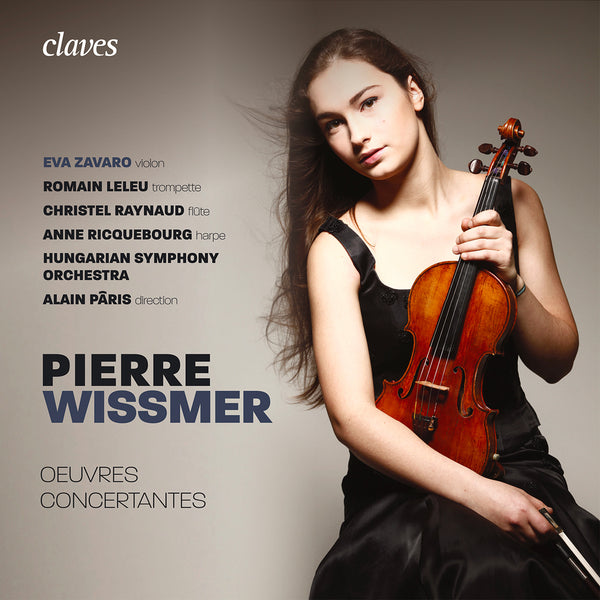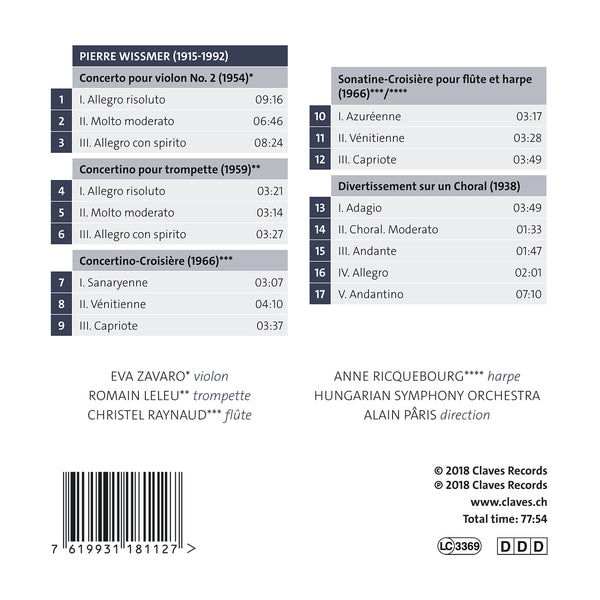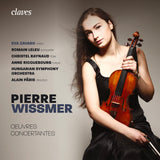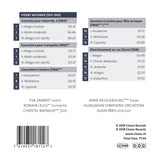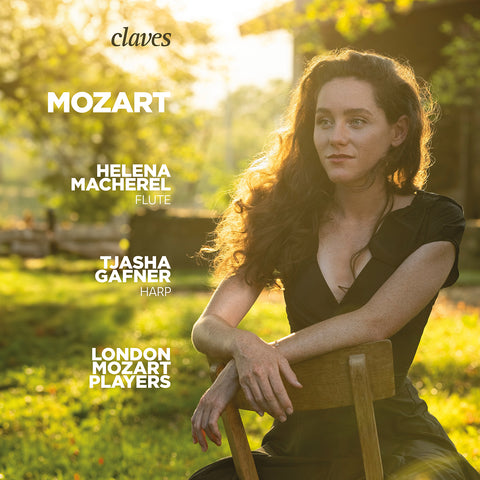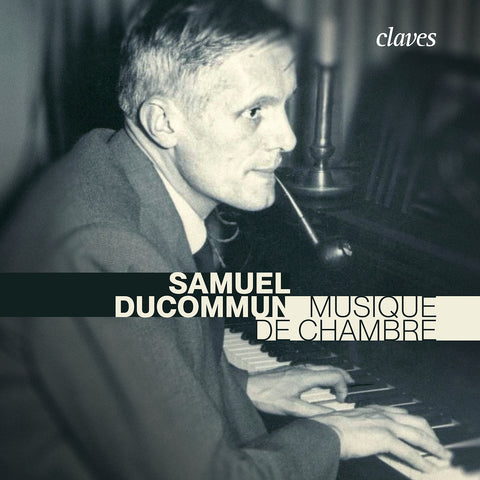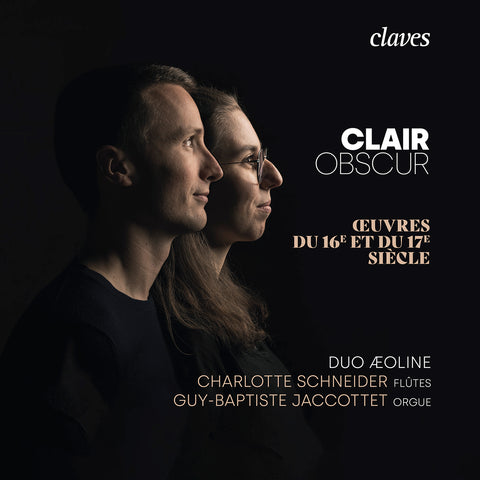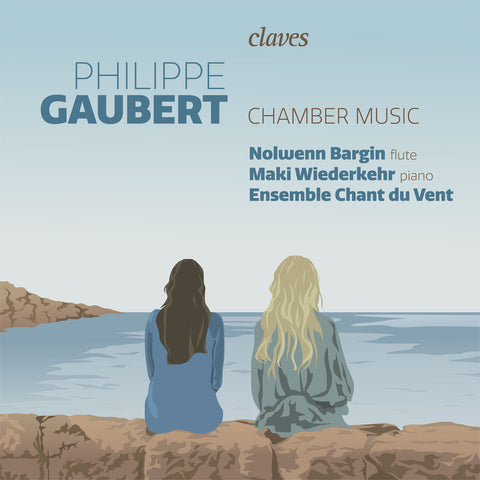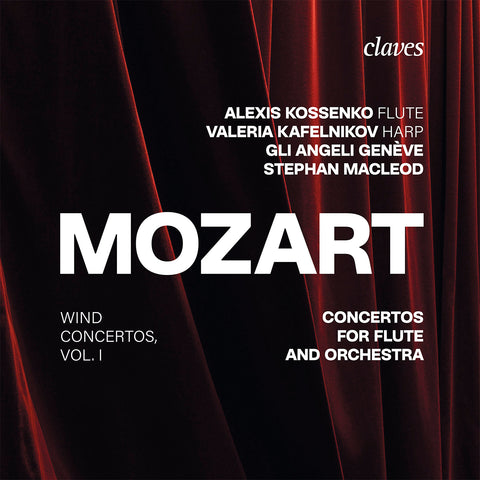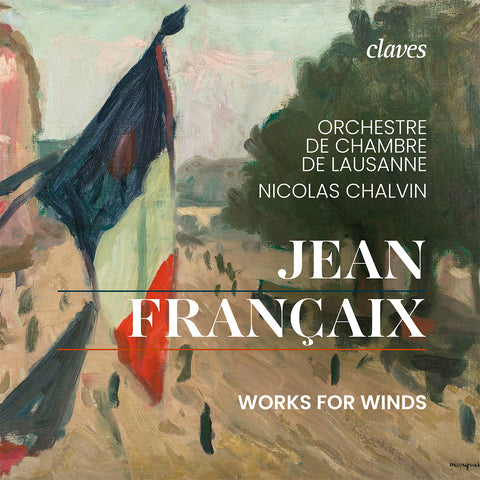(2018) Pierre Wissmer: Oeuvres concertantes
Category(ies): Chamber Concerto Orchestra
Instrument(s): Flute Harp Violin
Main Composer: Pierre Wissmer
Orchestra: Hungarian Symphony Orchestra
Conductor: Alain Pâris
CD set: 1
Catalog N°:
CD 1811
Release: 07.09.2018
EAN/UPC: 7619931181127
This album is now on repressing. Pre-order it at a special price now.
CHF 18.50
This album is no longer available on CD.
This album has not been released yet. Pre-order it from now.
CHF 18.50
This album is no longer available on CD.
CHF 18.50
VAT included for Switzerland & UE
Free shipping
This album is no longer available on CD.
VAT included for Switzerland & UE
Free shipping
This album is now on repressing. Pre-order it at a special price now.
CHF 18.50
This album is no longer available on CD.
This album has not been released yet.
Pre-order it at a special price now.
CHF 18.50
This album is no longer available on CD.
CHF 18.50
This album is no longer available on CD.
PIERRE WISSMER: OEUVRES CONCERTANTES
During the first half of the twentieth century, many Swiss Romandy composers received parallel training in Germany and then in Paris, maintaining often afterwards, respective ties with both the Latin and German poles of their homeland. This was the case of Frank Martin. For the Genevan Pierre Wissmer, it was France, and this country alone, which would be his home base, in his life as in his creative aesthetics.
Born in Geneva, Pierre Wissmer (1915-1992) studied music at the Conservatory of his native city, before leaving for Paris in 1935. He first worked with Roger-Ducasse, then acquired an authentic professional experience in Daniel-Lesur’s class of counterpoint at the Schola Cantorum. Over the years his style which could be defined as neo-classical, tended to move away from tonality and take on a more introspective language, particularly evidenced by his last symphonies. However, within this evolution, the perfection and refinement of contrapuntal writing and instrumentation are ever present in Wissmer’s art.
Parallel to his career as a composer, the musician took on an important role as a pedagogue, leading him to teach harmony, orchestration and composition at the Schola Cantorum, the Le Mans Conservatory and the Geneva Conservatory of Music. Pierre Wissmer’s production includes all genres–apart from religious music – and willingly adopts classical genres such as the symphony (he will compose nine of them between 1938 and 1989), the concerto (a field he cultivates with delight, the sonata, the trio, the quartet, etc. He is also the author of an outstanding corpus of melodies, ballets, as well as several lyrical works, such as Marion ou la belle au tricorne which was a real success when it was premiered in Paris in 1951.
Already in his early years, Pierre Wissmer distinguished himself thanks to his remarkable talent as an orchestrator and an innate sense of sonic color, attested by his Divertissement sur un choral for chamber orchestra composed at the beginning of 1938 when he was just twenty-two years old. The work is intended for an extremely light formation : the woodwinds by one, a trumpet, the strings without a double bass, a harp, as well as a piano to which he entrusts a quasi-soloist role.
The choir that supports the work is Ce que l’aîno, an old song celebrating the Genevan victory over the Savoyards during the events of the «Escalade», in 1602. In stark contrast to this somewhat austere melody, Wissmer designed a five-movement score full of freshness and invention. If the theme appears in extenso – in an almost hidden manner – only in the second piece, structured as an ornate chorale, it runs through all the melodic material. The composer freely uses modal scales and delightful archaisms; one can also recognize the amusing allusion to the opening of The Magic Flute at the beginning of the fourth movement. More than a third of the work alone, the fifth movement, a real «mini concerto for orchestra», brilliantly highlights the virtuosity of the various sections and finishes the piece most exuberantly.
In the 1950s, the language of Pierre Wissmer gradually changed : its hedonistic character, based on a shimmering harmony, gave way to a more inner expression, in which tonality became less clear and contrapuntal writing took on more and more importance.
The Concerto n° 2 for violin and orchestra falls within this evolution. The Allegro risoluto presents two themes, both from a cell of six notes already present in the orchestral introduction. Although based on the bithematic sonata form, the composer takes the greatest freedom with it. An impressive cadenza follows an abbreviated recapitulation which acts as a coda. Of elegiac character, sung by the solo instrument, a melodic line derived from a series of twelve tones, the Molto moderato evolves in a more and more feverish atmosphere, then regains its initial serenity with the recapitulation of the twelve-tone motif. After the final occurrence of the latter, the piece ends pianissimo, the natural fantasy and the ardor of Wissmer expressing themselves fully in the ending Allegro con spirito. A long introduction precedes the soloist’s opening, exposing a new twelve-tone theme, a unifying element of the mosaic motifs that shape the weft of this movement. If the whole work revolves around a tonal pole of A, the tone of A major asserts itself more clearly in this last piece whose inventiveness and enthusiasm are ever-present until its final chord.
In 1959, Pierre Wissmer was asked by the International Competition of Musical Execution of Geneva to compose the competition piece intended for trumpeters, a Concertino for trumpet and piano. Rather than the traditional diptych Andante-Allegro, common to most competition pieces, Wissmer adopted – as did André Jolivet for his eponymous work – a structure in three brief movements allowing the soloist to show respectively the extent of its sound, its expressive qualities and, finally, in the form of a tarantella, its virtuosity. At the same time as the piano version, the composer created a chamber orchestra version. In its orchestral form, the Concertino for trumpet was premiered in 1961 by Roger Delmotte, one of the great French trumpeters of the 20th century.
Despite the lightness and carefree nature of his presentation – three brief movements inspired by charming places on the Mediterranean coast – the Sonatine-Croisière composed in 1966, evolves in a more abstract expressive universe, with a scarcely noticeable tonal attachment and lines characterized by the irregularities of rhythmic and melodic contours.
The voluble initial movement, Azuréenne, pays tribute to the “joie de vivre” of the French Riviera dear to the musician. It is followed by a Vénitienne, a dreamy barcarolle in which melodic lines of the two instruments intertwine and respond to each other. Capriote, inspired by the famous island of the Gulf of Naples, competes with twirling rhythms expressed in constant meter changes that give the piece a liveliness that only fades with the final chord. The density of the harp part seems to call for an orchestral achievement. Also, Pierre Wissmer was simultaneously writing a concertante version entitled Concertino-Croisière, where the flute dialogues with a string orchestra, regularly reinforced by a piano. The work was first played in this form in 1967 at the Festival of Sanary-sur-Mer; the first movement would then take on the title Sanaryenne, in tribute to the small town on the French Riviera.
Jacques Tchamkerten
EVA ZAVARO
Eva Zavaro is one of the foremost French violinists of her generation. Born in 1995, she “plays from the heart” (Ivry Gitlis) as a soloist or chamber musician across the globe, sharing the stage with renowned artists. She graduated with a Masters degree from the Hochschule für Musik in Munich under Julia Fischer, and previously completed her Bachelors degree at the Conservatoire National Supérieur in Paris with Roland Daugareil.
At the age of 12 she won the Vatelot-Rampal competition in Paris, and, at 14, appeared as a soloist at the Salle Pleyel with the London Symphony Orchestra under John Eliot Gardiner. Recent solo engagements include Chausson’s Poème and Ravel’s Tzigane at the Dvorak Hall in Prague with the North Czech Philharmonic Orchestra, and Beethoven’s Triple Concerto (Orchestre de Paris, cond. Alain Altinoglu), which was broadcast on French television. She has performed regularly with the Orchestre de Pau Pays de Béarn conducted by Fayçal Karoui.
Eva is a very active and passionate chamber musician, and was selected to participate in the 2014 Ozawa International Academy in Switzerland. She has been a member of the Abegg Quartet (piano quartet), and is a founding member of the Daphnis Quartet (string quartet). Among her chamber music partners are renowned artists Julia Fischer, Daniel Müller-Schott, Edgar Moreau, Paul Meyer, Julien Hervé, Guillaume Bellom, Marie-Ange Nguci. She has performed recitals in venues such as the Sommets Musicaux in Gstaad, Switzerland, Mecklenbourg-Vorpommern Festpiele in Germany and at the Konzerthaus Berlin.
In 2016 she was awarded the Georges Enescu Prize by the SACEM. On this recording, Eva plays a violin by Antonio Stradivarius (Cremona 1715).
HUNGARIAN SYMPHONY ORCHESTRA
The Hungarian Symphony Orchestra of Budapest is now one of the finest orchestras in the country, well known for its excellent recordings and concerts. The Orchestra’s roots go back to 1907, when the Hungarian postal service founded a symphony orchestra. This ensemble, later known as the MATAV Orchestra, quickly became one of Hungary’s leading orchestras.
In 2007, the musicians of the MATAV Orchestra decided to continue their work separately under the name of Hungarian Symphony Orchestra. In the meantime, studio recordings and CD productions became an important part of the Orchestra’s work in addition to foreign tours. The Orchestra performs regularly in Budapest and has been invited to play in prestigious venues outside of Hungary such as the Musikverein in Vienna.
Several small chamber music ensembles (string, woodwind and brass ensembles) also exist, thanks to the presence of the 75 members of this orchestra, and thereby reinforce its quality.
ALAIN PÂRIS
Alain Pâris is firmly established as a specialist in the French music repertoire. He has conducted more than ninety orchestras throughout thirty countries, all over the world. He works regularly with the St-Petersburg State Academic Capella Symphony Orchestra and Chorus (1993-1999), the Ankara Bilkent Symphony Orchestra, the Athens State Orchestra (2002-2004), the Lebanese Philharmonic Orchestra (starting 2001), the Cairo Symphony Orchestra, the George Enescu Bucharest Philharmonic, the Kaunas Symphony Orchestra, endeavoring continuously to promote the French repertoire.
He studied with Pierre Dervaux, Paul Paray and Georg Solti. He won first Prize in the Besançon International Competition for Conductors in 1968 and occupied permanent positions at the Toulouse Capitole Theatre and Orchestra (1976-1978) and at the Opéra du Rhin in Strasbourg (1983-1987). He also taught conducting at the Strasbourg Conservatory (1986-1989) and gives master classes all over the world.
As a guest conductor, he gives concerts with all major French orchestras, as well as in Switzerland, Germany, Italy, Spain, Hungary, Estonia, Finland, Portugal, Greece, Bucharest, Vienna, and Hong Kong… He conducted the Orchestre de Paris at the salle Pleyel, and was invited in Buenos Aires (Teatro Colón), Singapore, Shanghai, Guangzhou, Katowice, Ljubljana, Vilnius, Budapest, Lugano, Bangkok, Macao, Istanbul, Mexico City (Palacio de Bellas Artes)…
A long time producer of musical content at Radio France, as well as a teacher and musicologist, he has written many reference books.
(2018) Pierre Wissmer: Oeuvres concertantes - CD 1811
During the first half of the twentieth century, many Swiss Romandy composers received parallel training in Germany and then in Paris, maintaining often afterwards, respective ties with both the Latin and German poles of their homeland. This was the case of Frank Martin. For the Genevan Pierre Wissmer, it was France, and this country alone, which would be his home base, in his life as in his creative aesthetics.
Born in Geneva, Pierre Wissmer (1915-1992) studied music at the Conservatory of his native city, before leaving for Paris in 1935. He first worked with Roger-Ducasse, then acquired an authentic professional experience in Daniel-Lesur’s class of counterpoint at the Schola Cantorum. Over the years his style which could be defined as neo-classical, tended to move away from tonality and take on a more introspective language, particularly evidenced by his last symphonies. However, within this evolution, the perfection and refinement of contrapuntal writing and instrumentation are ever present in Wissmer’s art.
Parallel to his career as a composer, the musician took on an important role as a pedagogue, leading him to teach harmony, orchestration and composition at the Schola Cantorum, the Le Mans Conservatory and the Geneva Conservatory of Music. Pierre Wissmer’s production includes all genres–apart from religious music – and willingly adopts classical genres such as the symphony (he will compose nine of them between 1938 and 1989), the concerto (a field he cultivates with delight, the sonata, the trio, the quartet, etc. He is also the author of an outstanding corpus of melodies, ballets, as well as several lyrical works, such as Marion ou la belle au tricorne which was a real success when it was premiered in Paris in 1951.
Already in his early years, Pierre Wissmer distinguished himself thanks to his remarkable talent as an orchestrator and an innate sense of sonic color, attested by his Divertissement sur un choral for chamber orchestra composed at the beginning of 1938 when he was just twenty-two years old. The work is intended for an extremely light formation : the woodwinds by one, a trumpet, the strings without a double bass, a harp, as well as a piano to which he entrusts a quasi-soloist role.
The choir that supports the work is Ce que l’aîno, an old song celebrating the Genevan victory over the Savoyards during the events of the «Escalade», in 1602. In stark contrast to this somewhat austere melody, Wissmer designed a five-movement score full of freshness and invention. If the theme appears in extenso – in an almost hidden manner – only in the second piece, structured as an ornate chorale, it runs through all the melodic material. The composer freely uses modal scales and delightful archaisms; one can also recognize the amusing allusion to the opening of The Magic Flute at the beginning of the fourth movement. More than a third of the work alone, the fifth movement, a real «mini concerto for orchestra», brilliantly highlights the virtuosity of the various sections and finishes the piece most exuberantly.
In the 1950s, the language of Pierre Wissmer gradually changed : its hedonistic character, based on a shimmering harmony, gave way to a more inner expression, in which tonality became less clear and contrapuntal writing took on more and more importance.
The Concerto n° 2 for violin and orchestra falls within this evolution. The Allegro risoluto presents two themes, both from a cell of six notes already present in the orchestral introduction. Although based on the bithematic sonata form, the composer takes the greatest freedom with it. An impressive cadenza follows an abbreviated recapitulation which acts as a coda. Of elegiac character, sung by the solo instrument, a melodic line derived from a series of twelve tones, the Molto moderato evolves in a more and more feverish atmosphere, then regains its initial serenity with the recapitulation of the twelve-tone motif. After the final occurrence of the latter, the piece ends pianissimo, the natural fantasy and the ardor of Wissmer expressing themselves fully in the ending Allegro con spirito. A long introduction precedes the soloist’s opening, exposing a new twelve-tone theme, a unifying element of the mosaic motifs that shape the weft of this movement. If the whole work revolves around a tonal pole of A, the tone of A major asserts itself more clearly in this last piece whose inventiveness and enthusiasm are ever-present until its final chord.
In 1959, Pierre Wissmer was asked by the International Competition of Musical Execution of Geneva to compose the competition piece intended for trumpeters, a Concertino for trumpet and piano. Rather than the traditional diptych Andante-Allegro, common to most competition pieces, Wissmer adopted – as did André Jolivet for his eponymous work – a structure in three brief movements allowing the soloist to show respectively the extent of its sound, its expressive qualities and, finally, in the form of a tarantella, its virtuosity. At the same time as the piano version, the composer created a chamber orchestra version. In its orchestral form, the Concertino for trumpet was premiered in 1961 by Roger Delmotte, one of the great French trumpeters of the 20th century.
Despite the lightness and carefree nature of his presentation – three brief movements inspired by charming places on the Mediterranean coast – the Sonatine-Croisière composed in 1966, evolves in a more abstract expressive universe, with a scarcely noticeable tonal attachment and lines characterized by the irregularities of rhythmic and melodic contours.
The voluble initial movement, Azuréenne, pays tribute to the “joie de vivre” of the French Riviera dear to the musician. It is followed by a Vénitienne, a dreamy barcarolle in which melodic lines of the two instruments intertwine and respond to each other. Capriote, inspired by the famous island of the Gulf of Naples, competes with twirling rhythms expressed in constant meter changes that give the piece a liveliness that only fades with the final chord. The density of the harp part seems to call for an orchestral achievement. Also, Pierre Wissmer was simultaneously writing a concertante version entitled Concertino-Croisière, where the flute dialogues with a string orchestra, regularly reinforced by a piano. The work was first played in this form in 1967 at the Festival of Sanary-sur-Mer; the first movement would then take on the title Sanaryenne, in tribute to the small town on the French Riviera.
Jacques Tchamkerten
EVA ZAVARO
Eva Zavaro is one of the foremost French violinists of her generation. Born in 1995, she “plays from the heart” (Ivry Gitlis) as a soloist or chamber musician across the globe, sharing the stage with renowned artists. She graduated with a Masters degree from the Hochschule für Musik in Munich under Julia Fischer, and previously completed her Bachelors degree at the Conservatoire National Supérieur in Paris with Roland Daugareil.
At the age of 12 she won the Vatelot-Rampal competition in Paris, and, at 14, appeared as a soloist at the Salle Pleyel with the London Symphony Orchestra under John Eliot Gardiner. Recent solo engagements include Chausson’s Poème and Ravel’s Tzigane at the Dvorak Hall in Prague with the North Czech Philharmonic Orchestra, and Beethoven’s Triple Concerto (Orchestre de Paris, cond. Alain Altinoglu), which was broadcast on French television. She has performed regularly with the Orchestre de Pau Pays de Béarn conducted by Fayçal Karoui.
Eva is a very active and passionate chamber musician, and was selected to participate in the 2014 Ozawa International Academy in Switzerland. She has been a member of the Abegg Quartet (piano quartet), and is a founding member of the Daphnis Quartet (string quartet). Among her chamber music partners are renowned artists Julia Fischer, Daniel Müller-Schott, Edgar Moreau, Paul Meyer, Julien Hervé, Guillaume Bellom, Marie-Ange Nguci. She has performed recitals in venues such as the Sommets Musicaux in Gstaad, Switzerland, Mecklenbourg-Vorpommern Festpiele in Germany and at the Konzerthaus Berlin.
In 2016 she was awarded the Georges Enescu Prize by the SACEM. On this recording, Eva plays a violin by Antonio Stradivarius (Cremona 1715).
HUNGARIAN SYMPHONY ORCHESTRA
The Hungarian Symphony Orchestra of Budapest is now one of the finest orchestras in the country, well known for its excellent recordings and concerts. The Orchestra’s roots go back to 1907, when the Hungarian postal service founded a symphony orchestra. This ensemble, later known as the MATAV Orchestra, quickly became one of Hungary’s leading orchestras.
In 2007, the musicians of the MATAV Orchestra decided to continue their work separately under the name of Hungarian Symphony Orchestra. In the meantime, studio recordings and CD productions became an important part of the Orchestra’s work in addition to foreign tours. The Orchestra performs regularly in Budapest and has been invited to play in prestigious venues outside of Hungary such as the Musikverein in Vienna.
Several small chamber music ensembles (string, woodwind and brass ensembles) also exist, thanks to the presence of the 75 members of this orchestra, and thereby reinforce its quality.
ALAIN PÂRIS
Alain Pâris is firmly established as a specialist in the French music repertoire. He has conducted more than ninety orchestras throughout thirty countries, all over the world. He works regularly with the St-Petersburg State Academic Capella Symphony Orchestra and Chorus (1993-1999), the Ankara Bilkent Symphony Orchestra, the Athens State Orchestra (2002-2004), the Lebanese Philharmonic Orchestra (starting 2001), the Cairo Symphony Orchestra, the George Enescu Bucharest Philharmonic, the Kaunas Symphony Orchestra, endeavoring continuously to promote the French repertoire.
He studied with Pierre Dervaux, Paul Paray and Georg Solti. He won first Prize in the Besançon International Competition for Conductors in 1968 and occupied permanent positions at the Toulouse Capitole Theatre and Orchestra (1976-1978) and at the Opéra du Rhin in Strasbourg (1983-1987). He also taught conducting at the Strasbourg Conservatory (1986-1989) and gives master classes all over the world.
As a guest conductor, he gives concerts with all major French orchestras, as well as in Switzerland, Germany, Italy, Spain, Hungary, Estonia, Finland, Portugal, Greece, Bucharest, Vienna, and Hong Kong… He conducted the Orchestre de Paris at the salle Pleyel, and was invited in Buenos Aires (Teatro Colón), Singapore, Shanghai, Guangzhou, Katowice, Ljubljana, Vilnius, Budapest, Lugano, Bangkok, Macao, Istanbul, Mexico City (Palacio de Bellas Artes)…
A long time producer of musical content at Radio France, as well as a teacher and musicologist, he has written many reference books.
Return to the album | Read the booklet | Composer(s): Pierre Wissmer | Main Artist: Eva Zavaro








